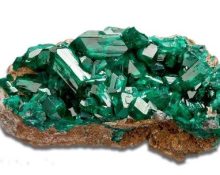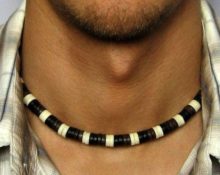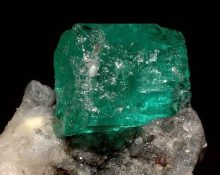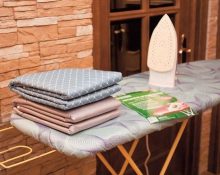Sapphire is one of the most coveted and valuable stones, captivating with its vibrant blue hue. How can you be sure that the sapphire in front of you is natural and not face deception? Buying a real sapphire is an investment, and it is important to be able to distinguish a real stone from an imitation. In this article, we will look at simple ways in which you can check natural sapphire right at home and find out how to distinguish sapphire from a fake stone.
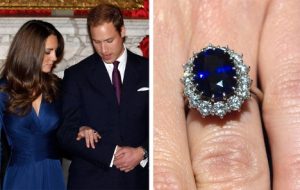
What is the difference between synthetic sapphire and natural one?
Synthetic sapphires are becoming increasingly popular in the gemstone market due to their affordable price and brilliant appearance, which at first glance is almost indistinguishable from natural stone. However, there are key differences between them.
First of all, synthetic sapphire is created in a laboratory, which allows manufacturers to control the purity and quality of the stone.Natural sapphire is formed over millions of years in the earth's crust and has unique inclusions or small defects that can serve as a sign of its authenticity.
How to test sapphire at home:
- Transparency and inclusions. A real sapphire may have small inclusions that are visible when viewing the stone under a magnifying glass. Synthetic sapphire will generally appear perfectly clear.
- Thermal conductivity. Sapphires are good heat conductors. When you touch your lips, a real sapphire will feel cooler than glass or plastic.
- Lamp test. Under ultraviolet light, many natural sapphires emit a luminous hue that may not be present in synthetic specimens.
How to check the authenticity of a sapphire at home
One of the best ways is to contact a qualified gemologist or jeweler who can perform a professional evaluation of the stone. However, if you want to get a preliminary idea of the authenticity of your sapphire at home, you can use the above methods. It is also recommended to avoid purchasing gemstones without a certificate of authenticity from a reputable organization.
How to choose a sapphire
Choosing a sapphire is a responsible and at the same time exciting activity. High-quality sapphire fascinates with its brilliance and depth of shades. However, to make the right choice, there are several key aspects to consider.
- Color: Color is one of the main criteria for evaluating sapphire. An ideal sapphire usually has a rich, deep blue color without any impurities. However, sapphires can range from light blue to dark blue, and choosing a specific shade is a matter of taste.
- Transparency and clarity: A high-quality sapphire should be transparent, without inclusions visible to the eye. Insertion can affect the cost of the stone, making it less attractive.
- Shape and cut: The shape and cut of a sapphire affects its brilliance and reflection of light. A good cutter can maximize the brilliance and color of a stone, even if it has minor imperfections.
- Size and weight: The price of a sapphire also depends on its size and weight (measured in carats). Large sapphires are rarer and therefore more valuable.
How to identify sapphire at home
In addition to the methods already mentioned, you can use several more approaches to check sapphire:
- Test with a sheet of paper: Place the sapphire on a clean white sheet of paper and inspect it for uniform color. A true sapphire will generally have a uniform color with no noticeable dark or light areas.
- Water test: Immerse the sapphire in a glass of water. If the stone remains clear and transparent, it is likely a real sapphire. Some imitations may become less transparent or lose their shine in water.
- Diamond test: real sapphire is almost as hard as diamond. If you have a small diamond or a diamond-tipped tool, try scratching the sapphire. If it is scratched, it is probably an imitation.
When purchasing a sapphire, it is always recommended to contact a professional and ask for a certificate of authenticity.
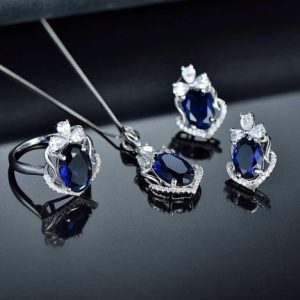
What is the difference between sapphire and topaz?
Sapphire and topaz are two different gemstones with different physical and optical characteristics. Although both stones may be similar in color, their origin, structure and hardness are different.Sapphire belongs to the corundum group of minerals and has a hardness of 9 on the Mohs scale, while topaz, which has a hardness of 8, is a separate mineral. To distinguish between these stones and how to check the authenticity of a sapphire, you can use hardness testing methods or analyze inclusions in the stone under a microscope.
How to evaluate a sapphire
The grading of a sapphire depends on many factors, inclusions, its color, clarity, size, cut and origin. However, one of the key points is the difference between artificial and natural sapphire. Natural sapphires tend to be more valuable due to their uniqueness, rarity and natural origin. While man-made sapphires can also look attractive, they are usually less expensive because they are produced in a laboratory. When valuing a sapphire, it is recommended to take into account its historical and geographical location, since sapphires from certain deposits may be valued higher.
How to distinguish sapphire from glass
You can distinguish sapphire from glass using several simple methods:
- Glass is easily scratched by metal, a fingernail or other objects, while sapphire will remain intact.
- When viewing through a gemstone, distortions or “double images” of an object behind the stone may indicate its refractive index. Sapphires typically have a high refractive index and can show this double image, whereas glass cannot.
- Sapphire will generally be heavier than glass of the same size due to its high density.
- Under a magnifying glass or microscope, inclusions or irregularities in natural sapphires can be detected. Glass will generally be more uniform.
- Sapphires have high thermal conductivity and quickly become cold to the touch, unlike glass.
Before making a conclusion, it is better to consult a professional gemologist, especially if we are talking about valuable jewelry or large investments.


 0
0